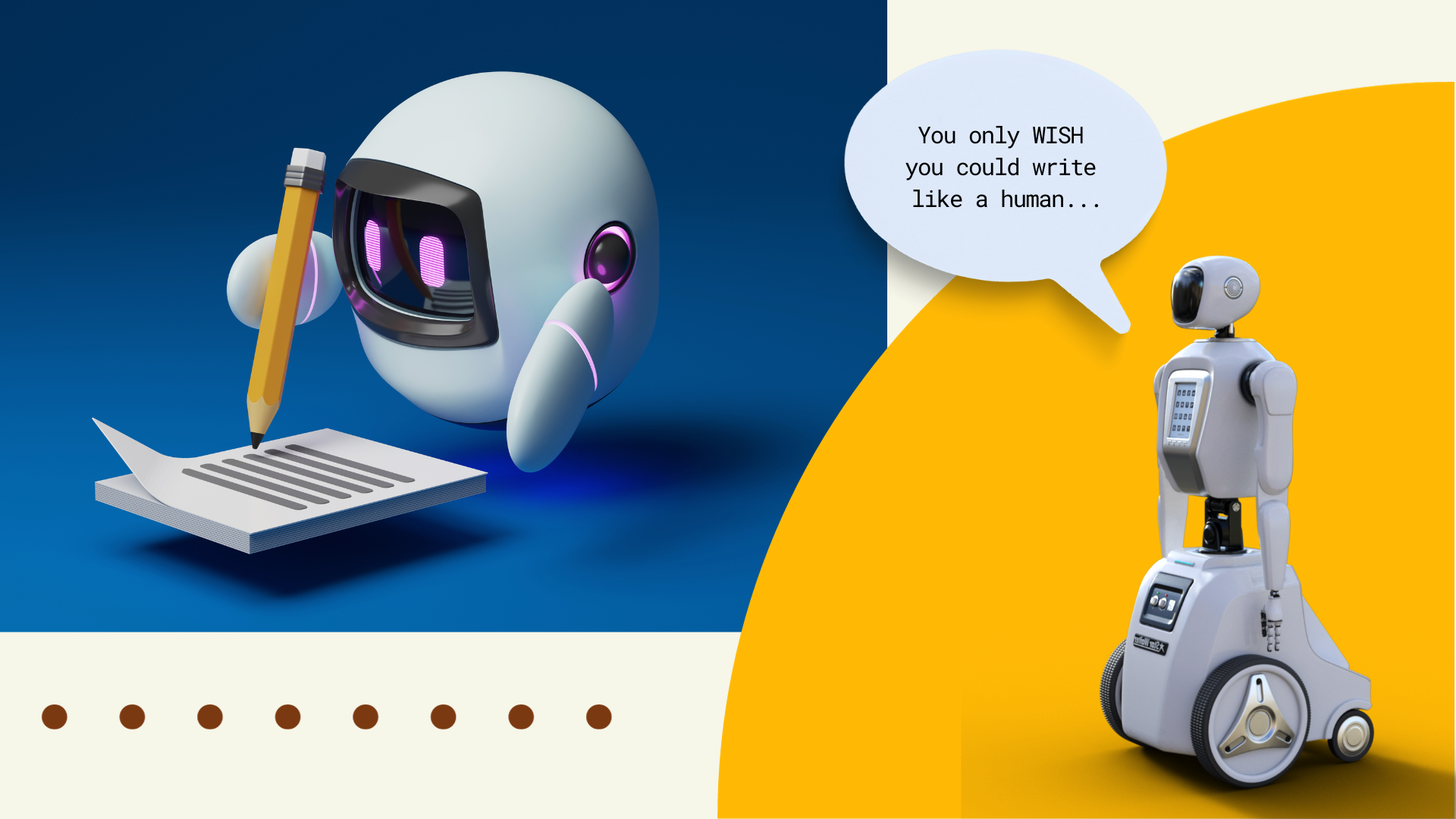Powered by Stories Blog
If You Aspire to Be a Thought Leader, Don’t Outsource Your Blogs to a Robot.

A few weeks ago, a friend asked me how she could tell if she was reading something written by ChatGPT. In answer, I emailed her the following product description for a bracelet I saw on Etsy:
“This bangle is a shining testament to timeless elegance, marrying traditional artisanship with avant-garde design. With a luxurious width of 4mm, this bangle graces the wrist with a gentle shimmer, making it an ideal piece for both day-to-day elegance and special soirées. For the contemporary woman who prides herself on her sartorial choices, this bangle encapsulates sophistication and modernity in equal measure. Its versatility ensures that it complements a myriad of ensembles, effortlessly transitioning from a daytime affair to an evening gala. Gentlemen, if you're on the hunt for a gift that speaks volumes of your affection and discernment, look no further. This bangle, presented in a meticulously curated gift box, promises to be a cherished treasure in any jewelry collection, echoing moments of joy and milestones celebrated.”
Even if I was able to disregard the fact that the description assumes that women can’t buy their own jewelry, reading this would still give me instant stomach cramps. The overabundance of adjectives alone would trip my “a robot wrote this” alarm.
Here’s the thing, aspiring thought leader. You’re not fooling anyone — or at least not anyone you want to impress. If you want to be an industry influencer, you’ll need to lead with the insights you've collected through your years of experience.
There is a place for AI-generated content. Leave it there.
Now, please don’t misunderstand. I love me some robots. They’re great for writing functional information, such as product descriptions (although, as I've illustrated, AI is perfectly capable of churning out crappy ones) or recipes. But there’s not an AI in the world that can take the place of your own brilliance or uniquely human vision.
After all, can you imagine ChatGPT cranking out a version of Martin Luther King Jr.’s “I Have a Dream” speech? What about Maya Angelou’s poem “Still I Rise”? Plato’s “The Republic”? No, no, and no. ChatGPT couldn’t even have written Tony Robbins’ “Notes from a Friend.”
I feel confident in saying that you will never inspire, persuade, or land a decent speaking slot with generative AI.
By the way, there are AIs that detect AIs.
Schools and publications are beginning to use automated checkers, such as Originality.ai, to look for signs that a piece or a student paper was generated by AI. Note that Originality.ai refers to this as "plagiarism." I agree. Writing with AI is essentially taking someone else's work and regurgitating it. It's not much different than copying from Wikipedia or Google. (Speaking of Google, the company has begun to use ML algorithms to detect material that was generated by AI. This will undoubtedly begin to thwart the use of AI-created SEO content as a way to rank higher in search results.)
Why should schools care? Because writing = learning. Synthesizing material and putting it into words aids understanding and retention.
Writing your content with AI is a bit like buying one of those crappy landscape prints you find at Target, hanging it on your wall, and calling it "art." If you do that, I'm embarrassed for you.
That said, here are five indicators that a human can use to sniff out content written by a robot:
- Conspicuous consistency. Humans vary their spoken and written rhythms, even when they’re trying to be consistent. A complete lack of variability — whether in voice or in sentence structure — is a hallmark of AI-generated copy.
- Weirdly inappropriate emotional tone. Yes, there are a lot of awkward human beings out there who struggle to convey emotion. But if there’s nary an iota of authentic emotion, you’re probably reading something written by a Vulcan or a robot.
- Excessive formality or hyperbolic adjectives. Harkening back to the bracelet description above, a passage I mercifully omitted read, “Rendered in gleaming 9 ct gold, its flexible mesh pattern not only exemplifies intricate detailing but also ensures a comfortable slip-on fit, adapting gracefully to your every movement.” It's excruciatingly robotic. Humans just don’t communicate that way…and if you come across one who does, run. They’re probably a serial killer.
- Lack of personality. People are quirky — and usually in consistent ways. For example, I consistently overuse ellipses and crack dumb jokes when I’m nervous. At an atomic level, these “quirkiness fingerprints” (yes, I just made that up) are what we call “personality.” Even when engineers try to encode quirkiness into an AI (looking at you, Siri), it feels conspicuously forced.
- Utter perfection. No matter how many times I re-read something I’ve written, I always miss something. An errant comma, a misspelling my spellchecker didn’t catch, a missing article…there’s always SOMETHING. It’s vexing. But it’s human.
To sum it all up, I see you, you purveyors of push-button prose. You know who you are. And so do I.



